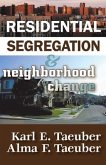Cities have always been dynamic social environments for visual and otherwise symbolic competition between the groups who live and work within them. This book presents studies of various cities on both sides of The Atlantic to show how global forces and the competition between urban residents in "contested terrains" is changing the faces of cities.
Seeing Cities Change demonstrates the utility of a visual approach and the study of ordinary streetscapes to document and analyze how the built environment reflects the changing cultural and class identities of neighborhood residents. Discussing the manner in which these changes relate to issues of local and national identities and multiculturalism, it presents studies of various cities on both sides of The Atlantic to show how global forces and the competition between urban residents in 'contested terrains' is changing the faces of cities across the globe.
Seeing Cities Change demonstrates the utility of a visual approach and the study of ordinary streetscapes to document and analyze how the built environment reflects the changing cultural and class identities of neighborhood residents. Discussing the manner in which these changes relate to issues of local and national identities and multiculturalism, it presents studies of various cities on both sides of The Atlantic to show how global forces and the competition between urban residents in 'contested terrains' is changing the faces of cities across the globe.









